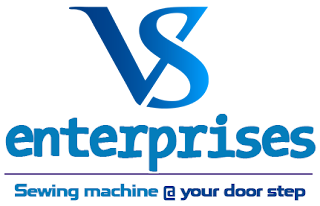The best Singer sewing machine - VS Sewing Machines
If you're drawn to the craft of sewing, tap into your artistic side and
invest in a Singer sewing machine. An industry-leading brand, Singer has
a wide product line that suits each style and level of sewing. Whether
you're looking for a lightweight machine for simple projects or want to
expand your horizons as a serious sewer with a computerized machine,
Singer has a model to match your needs.
To learn more, keep
reading our buying guide. At the end, we provide product recommendations
of our favorite models, including the Singer 9960 Quantum Stylist, which is our top pick for its impressive functionality geared toward true crafters.
Considerations when choosing Singer sewing machines
Mechanical vs. computerized sewing machines
Mechanical
Mechanical models are operated with crank dials and occasionally switches. As they stick to the basics, mechanical Singer sewing machines are considered to be budget-friendly.
Functions like stitch style, length, and tension are somewhat limited,
so they're ideal for beginners or those who want the simplicity of
straightforward machines. They are also perfect learning models for
children who are just getting into sewing.
Computerized
Computerized Singer sewing machines include some mechanical features,
though they are mostly digital. As their design falls into the territory
of electronics, they're on the more expensive side.
These
models boast advanced functions, which include more than a hundred
stitch styles, advanced speed settings, and programmable features.
They're mainly geared toward seasoned or professional sewers who engage
in high-level projects, including those requiring thick materials and
intricate detail.
Features
Basic parts and functionality
Built-in stitches: The basic Singer sewing machine stitches are straight, zigzag, three-step, blind hem, and overlock.
Buttonhole options: Singer sewing machines can create buttonholes and include special attachments that assist in their creation.
Free arm: This
is the surface where the bobbin and stitching mechanism are located.
It's accessed by removing the machine's extension table.
Extension table: This removable table pops onto the free arm to provide a greater surface area to spread out fabric while you work.
Presser feet: This silver part has a small upcurled toe and, when manipulated, either secures or releases the material you're sewing.
Tension knob: This knob controls how tight the thread is pulled between stitches.
Stitch speed: Stitch
speed is also controlled by a knob. In some machines, you're provided
the exact stitches per minute, whereas in others there's only a low-high
range.
http://www.vssewingmachine.com/sewing-machine-showroom-perambur/
http://www.vssewingmachine.com/sewing-machine-showroom-perambur/
Advanced functionality
Clearly, Singer sewing machines are well-equipped with the basics.
They're also well prepared with more functionality in advanced models.
In some, there are multiple buttonhole options, more than a hundred
stitches, embroidery programming, and more stitch speeds.
Included accessories
Singer sewing machines are equipped with accessory kits, which usually
include a mini seam ripper as well as spare bobbins, needles, and
different presser feet. There is also a mini tool kit for minor
adjustments, which includes a flat-head screwdriver and some spare
hardware. Certain models come with Singer-brand fabric scissors and mini
tape measures.
Singer sewing machine prices
Singer sewing machines generally cost between $100 and $700.
Lightweight models for beginner sewers are at the low end of the price
range, whereas more advanced models — particularly those with
programmable features — come in at the top of the range. Computerized
models tend to be more expensive, though some mechanical models cost
nearly as much.

No comments:
Post a Comment